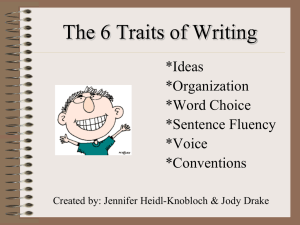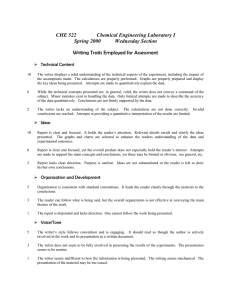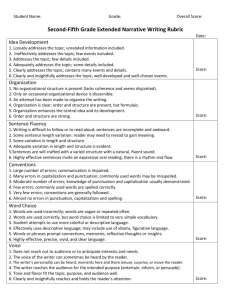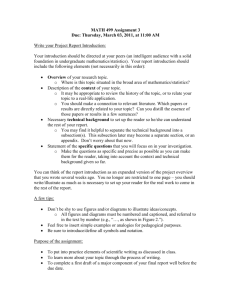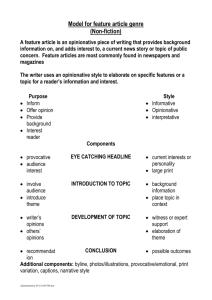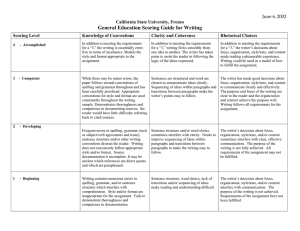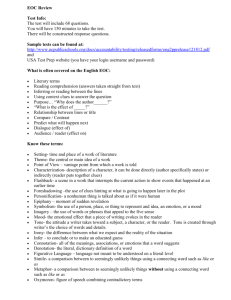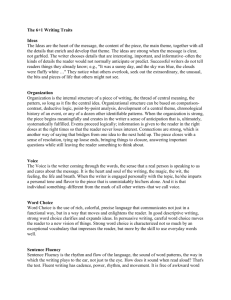Grade 11 6 traits of writing
advertisement
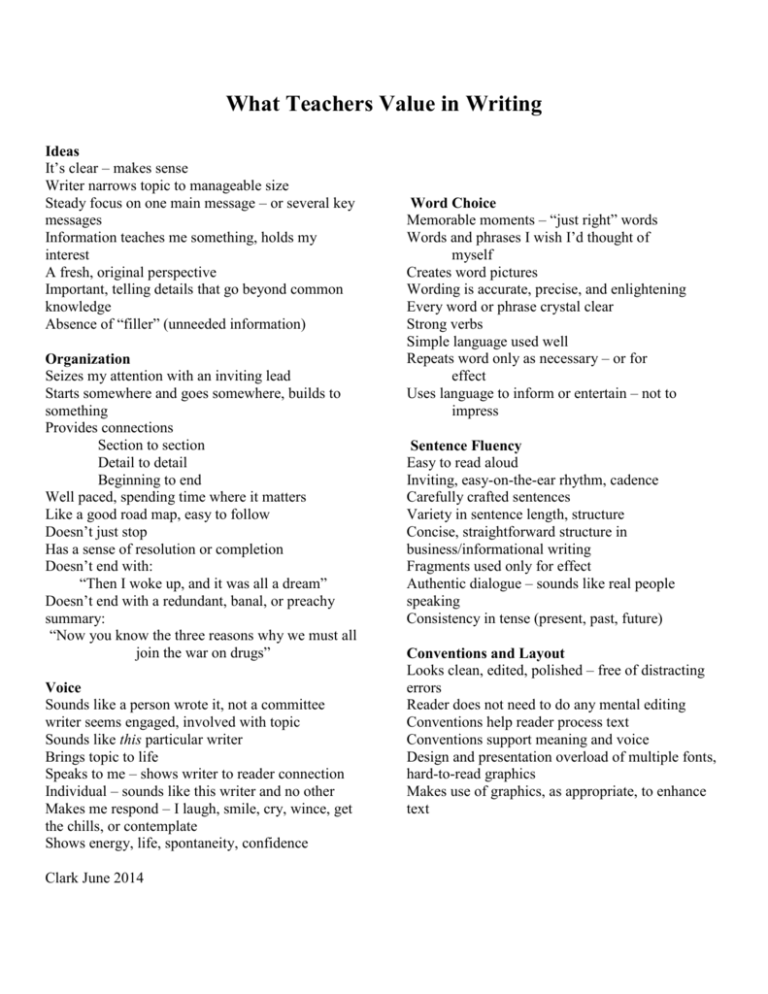
What Teachers Value in Writing Ideas It’s clear – makes sense Writer narrows topic to manageable size Steady focus on one main message – or several key messages Information teaches me something, holds my interest A fresh, original perspective Important, telling details that go beyond common knowledge Absence of “filler” (unneeded information) Organization Seizes my attention with an inviting lead Starts somewhere and goes somewhere, builds to something Provides connections Section to section Detail to detail Beginning to end Well paced, spending time where it matters Like a good road map, easy to follow Doesn’t just stop Has a sense of resolution or completion Doesn’t end with: “Then I woke up, and it was all a dream” Doesn’t end with a redundant, banal, or preachy summary: “Now you know the three reasons why we must all join the war on drugs” Voice Sounds like a person wrote it, not a committee writer seems engaged, involved with topic Sounds like this particular writer Brings topic to life Speaks to me – shows writer to reader connection Individual – sounds like this writer and no other Makes me respond – I laugh, smile, cry, wince, get the chills, or contemplate Shows energy, life, spontaneity, confidence Clark June 2014 Word Choice Memorable moments – “just right” words Words and phrases I wish I’d thought of myself Creates word pictures Wording is accurate, precise, and enlightening Every word or phrase crystal clear Strong verbs Simple language used well Repeats word only as necessary – or for effect Uses language to inform or entertain – not to impress Sentence Fluency Easy to read aloud Inviting, easy-on-the-ear rhythm, cadence Carefully crafted sentences Variety in sentence length, structure Concise, straightforward structure in business/informational writing Fragments used only for effect Authentic dialogue – sounds like real people speaking Consistency in tense (present, past, future) Conventions and Layout Looks clean, edited, polished – free of distracting errors Reader does not need to do any mental editing Conventions help reader process text Conventions support meaning and voice Design and presentation overload of multiple fonts, hard-to-read graphics Makes use of graphics, as appropriate, to enhance text


